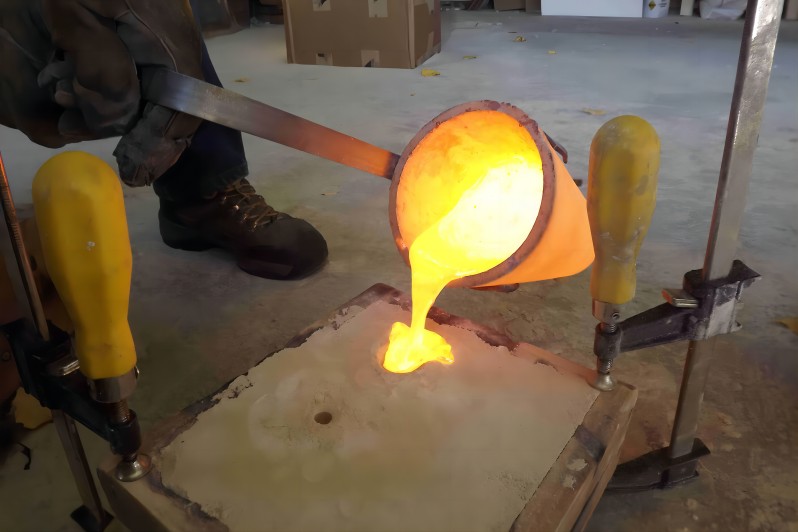How To Sand Cast?
Sand casting is a process used to create metal objects by pouring molten metal into a sand mold. It's a widely used method for producing various metal parts and components. Here's a basic overview of how to sand cast:
Materials and Equipment Needed:
Pattern: This is a replica of the object you want to cast, typically made of wood, metal, or plastic.
Foundry Sand: Special sand known as casting sand or green sand is used for making the mold. It's a mixture of sand, clay, and water.
Mold Box: This is a box-like frame used to contain the sand and the pattern.
Parting Compound: To help release the pattern from the sand.
Crucible: A container for melting the metal. It's usually made of graphite or ceramic.
Furnace: A source of heat to melt the metal. It could be a gas furnace or an electric furnace.
Pouring Ladle: To transfer the molten metal from the crucible to the mold.
Safety Equipment: This includes gloves, safety glasses, and a heat-resistant apron to protect yourself from the hot metal and sand.

The Sand Casting Process:
Prepare the Pattern: Create or obtain a pattern that is an exact replica of the object you want to cast.
Make the Mold:
a. Place one-half of the mold box on a flat surface.
b. Dust the pattern with parting compound and place it in the mold box.
c. Cover the pattern with casting sand, pressing it down firmly to create the first half of the mold.
d. Remove any excess sand from the top surface of the mold.
e. Place the second half of the mold box on top and secure it to the first half.
f. Fill the mold with more sand and ram it down to create the second half of the mold.
g. Separate the mold halves and carefully remove the pattern.
Prepare for Pouring:
a. Close the mold and secure both halves tightly together.
b. Create channels in the sand, called runners and gates, which allow the molten metal to flow into the mold and prevent air from getting trapped.
Melt the Metal:
a. Place the metal you want to cast (typically aluminum, bronze, or iron) into the crucible.
b. Heat the crucible in the furnace until the metal is completely melted.
Pour the Metal:
a. Wearing appropriate safety gear, carefully remove the crucible from the furnace using tongs.
b. Pour the molten metal into the mold through the pouring ladle.
Cool and Solidify:
a. Allow the metal to cool and solidify inside the mold.
Remove the Casting:
a. Once the metal has cooled, break apart the sand mold to reveal the cast metal object.
Finishing:
a. Remove any excess material, such as extra metal or sand, from the casting.
b. Sand or machine the casting to achieve the desired shape and finish.
Inspect and Finish:
a. Inspect the casting for defects and make any necessary adjustments or repairs.
b. Finish the casting as needed, such as painting or adding surface treatments.
Remember that sand casting can be a complex process and may require some trial and error to achieve high-quality results. Additionally, working with molten metal and high-temperature equipment can be dangerous, so always prioritize safety and use appropriate protective gear.
Dongrun Casting have 20000 square meters facility houses and 200 production & test equipment, From quotation and tooling design to casting and finished machining, we can work with you at every stage. We serves wide range of industries-from Fortune 500 corporations to small and midsize OEMs. Our products includes: Automotive&Trucking, Electric Utility & Communications, Metering System, Hydraulic Industry, Medical Devices, Lighting, Fuel and Gas Pressure, Furniture parts.
More Details : www.dongruncasting.com
